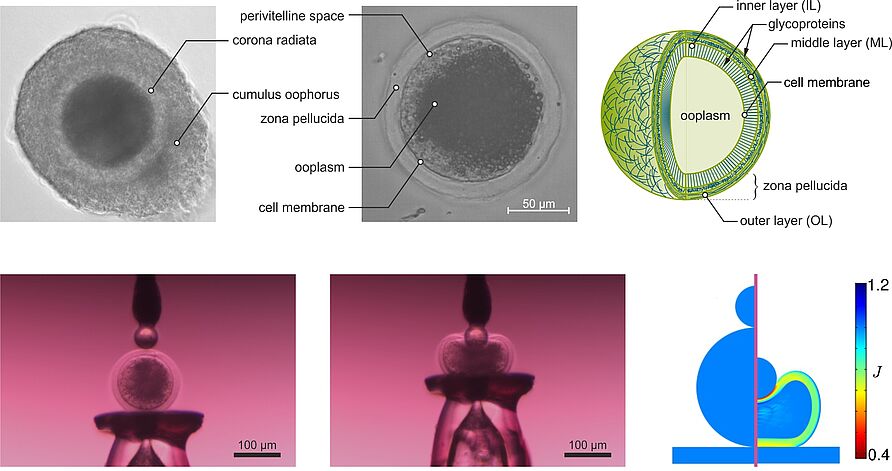Probing mechanical properties of cells has been identified as a means to infer information on their current state, e.g. with respect to diseases or differentiation. Oocytes have gained particular interest, since mechanical parameters are considered potential indicators of the success of in vitro fertilisation procedures. Established tests provide the structural response of the oocyte resulting from the material properties of the cell’s components and their disposition. Based on dedicated experiments and numerical simulations, we here provide novel insights on the origin of this response. In particular, polarised light microscopy is used to characterise the anisotropy of the zona pellucida, the outermost layer of the oocyte composed of glycoproteins. This information is combined with data on volumetric changes and the force measured in relaxation/cyclic, compression/indentation experiments to calibrate a multi-phasic hyper-viscoelastic model through inverse finite element analysis. These simulations capture the oocyte’s overall force response, the distinct volume changes observed in the zona pellucida, and the structural alterations interpreted as a realignment of the glycoproteins with applied load. The analysis reveals the presence of two distinct timescales, roughly separated by three orders of magnitude, and associated with a rapid outflow of fluid across the external boundaries and a long-term, progressive relaxation of the glycoproteins, respectively. The new results allow breaking the overall response down into the contributions from fluid transport and the mechanical properties of the zona pellucida and ooplasm. In addition to the gain in fundamental knowledge, the outcome of this study may therefore serve an improved interpretation of the data obtained with current methods for mechanical oocyte characterisation.
A. Stracuzzi, J. Dittmann, M. Böl, A. E. Ehret
Visco- and poro-elastic contributions of the zona pellucida to the mechanical response of oocytes
Biomechanics and Modeling in Mechanobiology, in press (2021) [Link]

